Rhodotus palmatus
Scientific name: Rhodotus palmatus (Bull.) Maire
Derivation of name: Rhod- means "rosy" and otos means
"ear" (i.e., cap). Palm- means "palm" (as of the hand).
Synonyms: Pleurotus palmatus (Bull.) Quel.
Common name(s): Netted rhodotus.
Phylum: Basidiomycota
Order: Agaricales
Family: Physalacriaceae
Occurrence on wood substrate: Saprobic; scattered or in
groups on dead deciduous wood, particularly maple and elm;
June through September.
Dimensions: Caps 2.5-9 cm wide; stipes 2.5-5 cm long
and
3-5 mm thick.
Cap: Surface reddish to pinkish to salmon-orange;
netted
(reticulate) with ridges and pits or (not uncommonly)
without
ridges and pits. Flesh pinkish, gelatinous; cap
sometimes slimy.
Gills: Attached; pinkish.
Spore print: Pinkish.
Stipe: Reddish to pinkish; dry; eccentric to almost lateral.
Veil: Absent.
Edibility: Unknown.
Comments: This species is circumboreal in distribution but
not usually reported as common in most localities. Most of
photographs on this page
were contributed by Carla Wick,
a freelance photographer who has the great
pleasure of
regularly finding and
photographing this species.
Her
photographs of Rhodotus palmatus were
featured in
the
Fall 2011 issue of the journal Fungi.
Carla's photographs
of
mushrooms and other areas of interest may be viewed at
her art/photo site. Her email is:
SauriaMami@aol.com
More information at MushroomExpert.com:
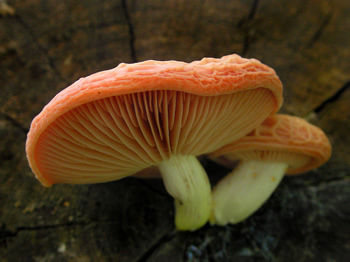
Figure 1.
Rhodotus palmatus on dead hardwood.
Photo © Carla Wick.
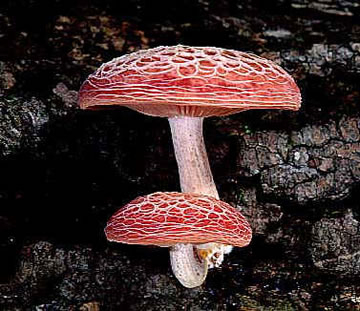
Figure 2. Specimens showing much more reddish caps than
the specimens in Figure 1. Photo © Greg Thorn.
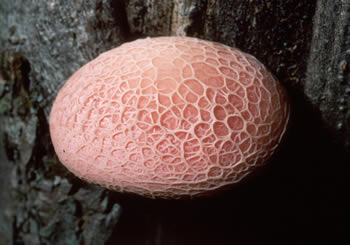
Figure 3. The cross-linked, lightly colored ridges and
pinkish cap surface of the pits can be quite striking and,
when present, are a distinctive characteristic of this species.
Photo © William Roody.
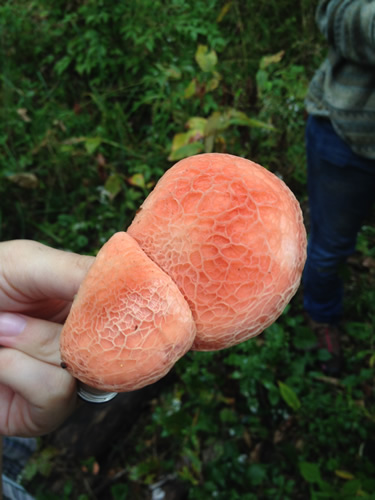
Figure 4. A specimen of Rhodotus palmatus found by two
of my former students.
Photo © Timothy Swartz.
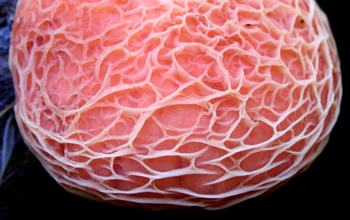
Figure 5. Carla Wick, who took this photograph, observes
that the beautiful wrinkles on the cap of this species require
an
alternating dry/wet/dry/wet environment in order to fully
develop. If the environment stays wet, the caps puff up
like pink puffballs and the cap surface looks like a thick gel.
Photo © Carla Wick.
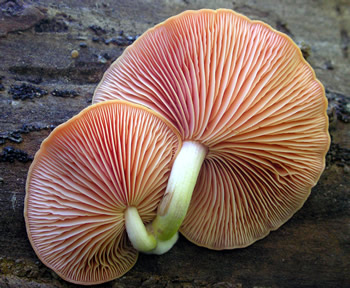
Figure 6. Two specimens of Rhodotus palmatus showing
the attached, pinkish gills characteristic of the species.
Photo © Carla Wick.
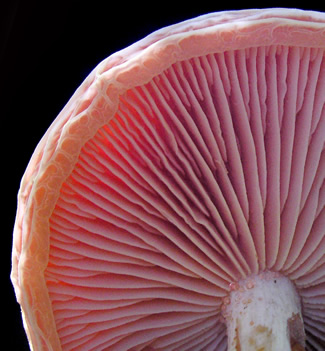
Figure 7. The cap edges are rolled inward on young
specimens. This view also shows lamellulae: the short gills
that
do
not extend the entire distance from the cap edge
to the
stem.
Photo © Carla Wick.
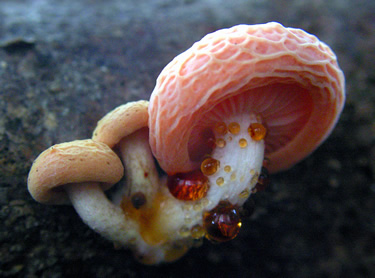
Figure 8.
Netted rhodotus sometimes "bleeds" a pink to red to
orange colored liquid. The function of this fluid is unknown.
Photo © Carla Wick.
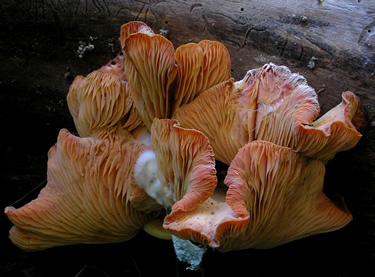
Figure 9. Older, crowded specimens of
Rhodotus palmatus
lacking the typical convex cap shape and the conspicuous
reticulation of the cap surface. Photo © Carla Wick.